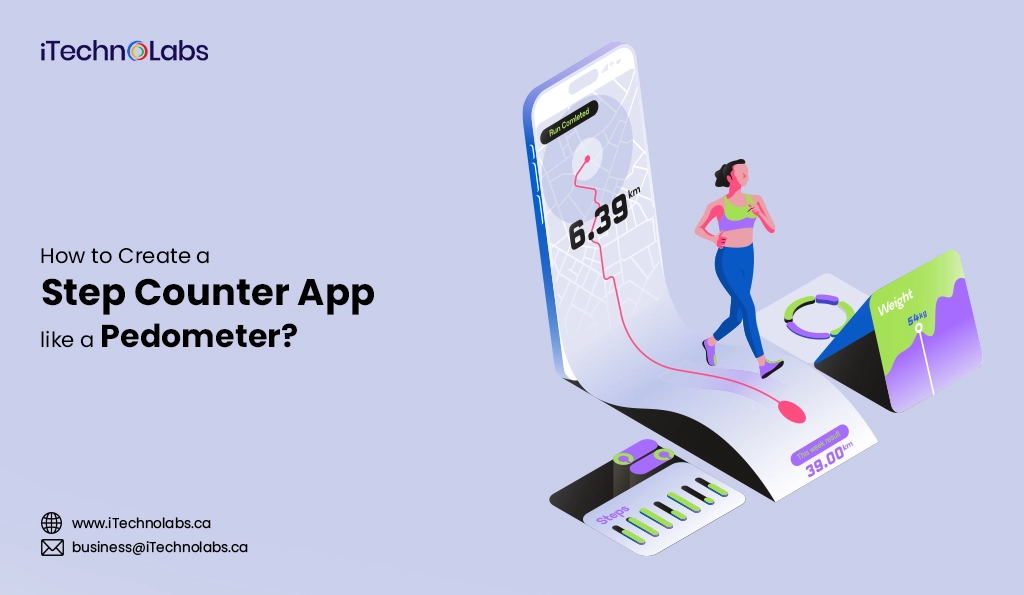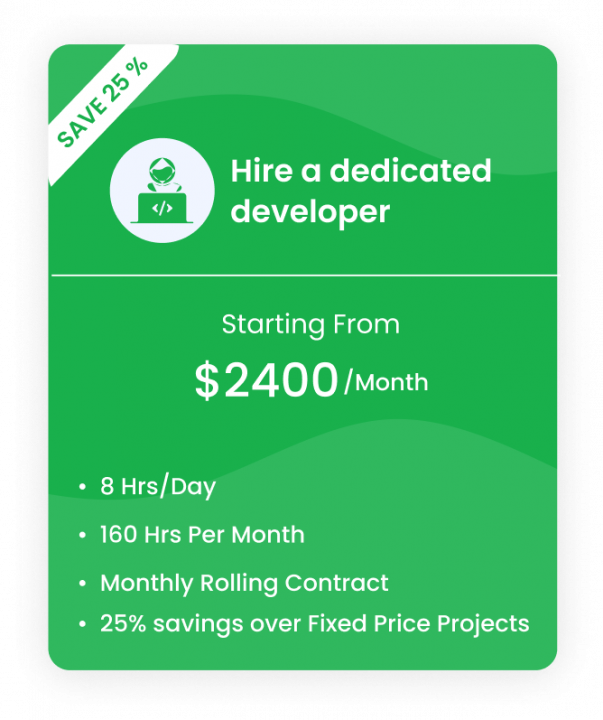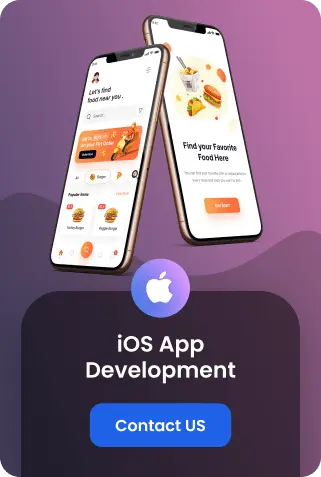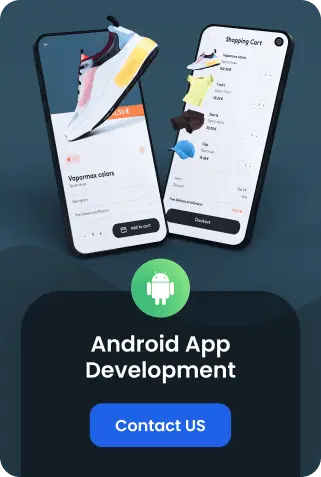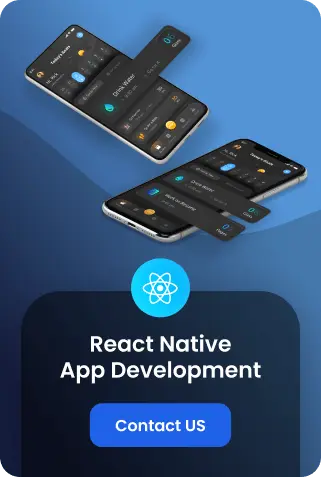Pedometers have long been a popular fitness tracking device, serving as an indispensable tool for individuals keen on monitoring their daily physical activity levels. These devices have undergone significant evolution, thanks to advancements in technology. From simple mechanical counters, pedometers have transformed into sophisticated wearable devices. These modern versions can seamlessly integrate with smartphones, offering users a highly interactive and user-friendly experience. This integration also allows for the tracking of additional metrics such as calories burned and distance covered, making it a more holistic fitness tool.
For developers, creating a step counter app presents an outstanding opportunity to tap into the growing market of fitness tracking. By leveraging the capabilities of mobile applications, developers can offer users a convenient way to monitor their health and fitness goals. This intersection of fitness tracking and mobile technology opens up new avenues for innovation in health and wellness apps.
In this detailed tutorial, we will dive into the intricacies of developing a pedometer step counter app. We will use Android Studio, the official integrated development environment (IDE) for Android app development, alongside Java, one of the most popular programming languages. This guide will cover everything from setting up your development environment to coding the app’s core functionality, ensuring you have all the tools necessary to create a user-friendly and effective step counter app.
Introduction of Pedometer: A Steps Counter App
Pedometers have been around for over 200 years, first invented in the early 19th century by French inventor Abraham-Louis Perrelet. These early versions were simple mechanical devices that counted steps based on the movement of a user’s hips while walking. However, with the rise of modern technology, pedometers have seen significant advancements and have become an essential tool for fitness enthusiasts.
Today, pedometers are most commonly found in the form of mobile apps. These apps use the sensors on a user’s smartphone to track their steps and provide them with valuable data about their physical activity. With the ever-increasing popularity of fitness tracking, pedometer apps have become a must-have for those looking to monitor and improve their health and wellness.
Current Market Stats of Fitness Tracker
- The global fitness tracker market size was valued at approximately USD 36 billion in 2020 and is expected to reach USD 114 billion by 2028, growing at a CAGR of 15% during the forecast period.
- According to recent surveys, 1 in 5 adults in the United States use a fitness tracker or smartwatch.
- The Asia-Pacific region is witnessing the highest growth rate in the fitness tracker market, attributed to growing awareness about health and wellness and the increasing adoption of smart technologies.
- Wearable devices dominate the market, with smartwatches and wristbands accounting for over 60% of sales in the fitness tracker category.
- The COVID-19 pandemic has significantly boosted the market’s growth as individuals have become more health-conscious and interested in monitoring their physical activity and overall health.
Also Read: A Complete Guide to Fitness App Development & Cost
7 Key Steps to Develop A Step Counter App
1. Extensive Market Research
Before embarking on the development of a step counter app, it’s imperative to first dive into comprehensive market research to grasp the prevailing trends, user preferences, and the competitive landscape within the fitness tracker industry. A thorough analysis will shed light on the needs and desires of potential users, making it easier to pinpoint the target demographic. Additionally, understanding the strengths and weaknesses of existing products in the market can guide the design and feature set of your app, ensuring it stands out. This foundational work is not only about identifying opportunities but also about crafting a unique value proposition that will give your app a competitive edge in a crowded marketplace.
2. Choose the Tech Stack Appropriately
Choosing the appropriate technology stack is vital to the success of your app. The tech stack will impact everything from development costs to future scalability. For a step counter app, you’ll need technologies that can accurately track and record steps while being energy efficient for extended use. You may also want to consider integrating features such as GPS tracking and heart rate monitoring. Depending on your target platform, you’ll need to select the appropriate programming language and frameworks. For instance, if your app is designed for iOS devices, then you may want to use Swift and Xcode.
3. Make UI/UX Design
User experience (UX) and user interface (UI) are critical components of any app, and a step counter app is no exception. A well-designed UI/UX design can significantly impact the user’s engagement with your app by making it easy to use and visually appealing. The design should be simple, intuitive, and user-friendly. It should also align with your brand image and target demographic. Additionally, incorporating gamification elements such as achievements and challenges can make your app more engaging and encourage users to keep stepping.
4. App Development
App development is the crucial phase where the technical blueprint of your application transitions from concept to reality. This intricate process encompasses several key activities including coding, testing, and seamlessly integrating various features to breathe life into a functional and engaging app. To guarantee an exceptional user experience, it is paramount to conduct extensive testing at every stage of the development process. Identifying and rectifying any bugs or glitches promptly can significantly enhance the app’s performance and reliability. Moreover, considering the specialized nature of fitness applications, it’s advisable to enlist the support of experienced developers who possess a deep understanding and expertise in creating apps within this niche. Their valuable insights and skills can help in crafting an app that not only meets but exceeds user expectations, setting a new benchmark for quality and innovation in the fitness app market.
5. Testing and Quality Assurance
As mentioned earlier, testing and quality assurance play a vital role in ensuring that your app functions flawlessly and provides an exceptional user experience. This process involves rigorous testing of various features and functionalities to identify any potential issues or bugs that may hinder the overall performance of your app. Additionally, conducting beta testing with a select group of users can provide valuable feedback on the usability and functionality of the app, allowing for necessary improvements to be made before its official launch. Regular updates and maintenance are also essential in maintaining a high-quality app and keeping up with any changes in technology or user preferences.
6. Launching and Marketing
With a well-developed and thoroughly tested app, it’s time to launch it into the market. This involves creating a launch plan and marketing strategy to ensure maximum visibility and reach for your app. Utilizing various online platforms such as social media, app stores, and fitness communities can help generate buzz and attract potential users. Additionally, collaborating with influencers or partnering with other fitness-related businesses can also be beneficial in reaching your target audience and promoting your app.
7. Maintenance and Updating
Once your app is launched, the journey doesn’t end there. Regular maintenance and updates are crucial in keeping your app relevant and competitive in the ever-evolving fitness market. This includes fixing any bugs or issues that may arise, adding new features to enhance user experience, and staying up-to-date with technological advancements. Additionally, gathering feedback from users and incorporating their suggestions can also help improve the overall performance and satisfaction of your app.
Essential Features of A Step Counter App Must Have
1. Accurate Steps Tracking
The most fundamental feature of a step counter app is its ability to accurately track and display the number of steps taken by the user. This requires precise sensing technology and intelligent algorithms to differentiate between different types of movement and accurately count each step.
2. Real-time Updates
Users demand instant feedback on their progress and accomplishments, which is why real-time updates are a critical component of any step counter application. This essential feature should include a detailed display of the number of steps taken, the distance covered, and the calories burned, all updated in real time. Additionally, providing insights into daily, weekly, and monthly progress can greatly enhance user engagement and motivation, making it imperative for developers to integrate these functionalities into their app designs.
3. Customized Experience
No two users are the same, and offering a highly personalized experience can significantly influence the success of your application. By implementing features such as customizable goals that align with each user’s objectives, reminders that encourage users to stay active and maintain their engagement, as well as personalized challenges that are tailored to meet the specific needs and preferences of individual users, you can elevate the app’s interactivity and engagement levels. These tailored experiences not only meet users’ unique requirements but also deepen their connection with the app, making it a more integral part of their daily routine.
4. Activity History
For users who are deeply committed to maintaining and enhancing their fitness levels, possessing a detailed and comprehensive record of their daily activities is not just beneficial—it’s crucial. This integral feature empowers them to meticulously track their progress over time, facilitating a deeper understanding of their fitness journey. It offers them invaluable insights into their performance, helping identify areas where improvements can be made or celebrating consistency and growth in their fitness regimen.
By adding visual representations or graphs that succinctly display the user’s activity history, this feature can be significantly enhanced. Such visual aids transform raw data into an easy-to-understand and visually appealing format, making it simpler for users to analyze their performance at a glance. Incorporating elements like trend lines, progress markers, and color-coded activity levels can further enrich this feature, making it not only more engaging but also highly motivating. This encourages users to continue their fitness journey with renewed enthusiasm, as they can visually track their achievements and set new goals based on solid, personalized data.
5. Daily Reminders
In today’s fast-paced world, it can be challenging for individuals to remember every task they need to do. With the multitude of responsibilities and distractions that come with daily life, it’s easy to forget about our health and fitness goals. Incorporating a daily reminder feature within your fitness app can help users stay on track by sending them timely notifications or alerts about their designated activities for the day. This feature can also be customized to fit a user’s specific needs, whether it’s reminding them to drink water, do a certain workout, or take their supplements.
6. Social Sharing
The power of social media cannot be ignored in today’s digital age. By incorporating a social sharing feature within your fitness app, users can share their progress and achievements with their friends and family on various platforms. This not only adds an element of motivation by allowing users to receive positive feedback from their peers but also serves as free marketing for your app. Additionally, this feature can also include the option of creating fitness challenges with friends or joining online fitness communities, fostering a sense of camaraderie and support among users.
7. GPS Tracking
For individuals who prefer outdoor activities like running, cycling, or hiking, a GPS tracking feature can be highly beneficial. This feature allows users to track their routes, distance covered, and speed in real-time, providing them with accurate data on their performance. It also enables users to set location-based goals or challenges, creating an interactive experience for the user.
8. Distance Measurement
Many fitness activities involve a specific distance as a goal, such as running a certain number of miles or cycling a set distance. By incorporating a distance measurement feature within your app, users can easily track their progress toward these goals and adjust their workouts accordingly. This feature can also include the option to track distances covered over time, giving users a sense of accomplishment and motivating them to continue their fitness journey.
9. User-friendly Interface
A clean and user-friendly interface is crucial for the success of any fitness application. Users must be able to navigate through the app effortlessly, locate relevant information rapidly, and grasp the functionalities without significant effort. To achieve this, incorporating a simple, intuitive design is key. Such a design not only makes it easier for users to interact with the app but also significantly enhances the overall user experience. By focusing on minimizing complexity and maximizing usability, developers can ensure that users not only download but also regularly use the app. Moreover, an intuitive design helps reduce the learning curve for new users, making it more likely for them to continue using the app over time. This approach not only benefits the users by providing them with a seamless and enjoyable experience but also aids fitness app developers in retaining a loyal user base.
10. Start, Pause, and Reset
The ability to start, pause, and reset a fitness activity is an essential feature in any fitness app. This allows users to have control over their workouts and take breaks as needed. It also enables them to track the duration of their workouts accurately. By incorporating this feature, users can easily pause a workout if they need to take a water break or tend to an urgent matter. Additionally, the reset function allows users to start over if they make a mistake or want to redo a workout. This feature adds flexibility and convenience for users, making their fitness journey more manageable and enjoyable.
How Much Does It Cost To Develop A Step Counter App?
The cost of developing a step counter app can vary significantly based on a range of factors including app complexity, platform (Android, iOS, or both), design intricacies, feature set, and the geographical location of the development team. On average, a basic step counter app might cost anywhere from $10,000 to $50,000. However, for more advanced features such as social integration, gamification, personalized fitness plans, or integration with wearable devices, the cost could escalate to between $50,000 and $100,000 or more. It is also crucial to factor in ongoing costs post-launch, such as server fees, updates, maintenance, and marketing, which can significantly add to the overall investment.
Breakdown of Development Costs for a Step Counter App
- App Complexity and Design: Simple apps might start from $20,000, while complex apps with advanced UI/UX design could go beyond $40,000.
- Platform Selection: Developing for one platform (iOS or Android) could reduce costs, but targeting both platforms to maximize reach could double the initial estimates.
- Feature Set: Basic features like counting steps may keep costs lower, but adding social integration, gamification, or personalized fitness plans will increase the budget, potentially reaching up to $100,000.
- Integration with Wearables: Compatibility with devices like smartwatches can push costs higher due to the added complexity in development.
- Location of Development Team: Teams based in North America or Western Europe tend to charge more than those in Eastern Europe or Asia, affecting the overall development cost.
- Post-Launch Expenses: Ongoing server fees, updates, maintenance, and marketing are additional costs that can significantly impact the total investment over time.
- Budget Considerations: While it may be tempting to opt for the lowest development cost possible, remember that a more significant initial investment in features and quality can lead to long-term success and ROI. It is important to balance budget constraints with the desired app features and overall goals of the project.
Suggested: How Much Does it Cost to Create An App
Why Must an Entrepreneur Invest In Building A Step Counter App?
Entrepreneurs looking to invest in building a step counter app should consider the potential benefits and impact of such an investment. Some reasons why an entrepreneur should consider investing in a step counter app include:
1. Market Opportunity:
The demand for health and fitness apps has been steadily increasing in recent years, with the global fitness app market projected to reach $14.64 billion by 2026. This presents a significant opportunity for entrepreneurs looking to enter this market and capitalize on the growing demand for health and fitness technology.
2. Growth Potential :
As people become more conscious of the crucial role physical activity plays in maintaining overall health and the benefits of closely monitoring health metrics, the demand for step counter apps is anticipated to surge. This burgeoning interest underscores a vital aspect of modern health management—integrating technology with daily fitness routines to achieve health goals. Consequently, this trend presents a substantial growth opportunity for entrepreneurs who are considering investing in the digital health market, particularly in the development and enhancement of step counter applications. This sector not only promises financial returns but also contributes to the promotion of a healthier society by encouraging active lifestyles through innovative technology.
3. Low Maintenance and High Return :
The cost of developing a step counter app is relatively low, especially when compared to the significant investment required for other fitness technologies, such as wearable devices. Wearables often involve complex hardware and software development, driving up initial production and development costs. In contrast, a step counter app primarily relies on the smartphone’s built-in sensors, reducing the need for expensive hardware. Furthermore, the maintenance costs for a step counter app are minimal, mostly involving routine updates and bug fixes, which are significantly less costly than the ongoing manufacturing and material costs associated with wearables. This cost-effectiveness, combined with the high demand for user-friendly fitness solutions, makes developing a step counter app a lucrative investment with high potential returns.
4. Simple Technology and Easy Entry :
Another advantage of investing in step counter apps is the ease of entry into the digital health market. With the increasing availability of app development tools and resources, developing a basic step counter app requires minimal technical expertise. This accessibility allows for more entrepreneurs to enter the market, fostering innovation and competition. Moreover, with advancements in technology, such as machine learning and artificial intelligence, developers can continually improve and upgrade their step counter apps, making them more accurate and user-friendly.
5. Freemium Model to Make Money:
One of the most lucrative monetization strategies for step counter apps is through a freemium model. This model offers a basic version of the app for free, enticing users to download and try it out. However, for additional features and functionality, users must pay a premium. This approach allows developers to attract a larger user base while still generating revenue from those willing to upgrade their app experience. Additionally, through in-app purchases, developers can offer users the option to purchase virtual goods or services within the app, such as personalized workout plans or access to exclusive fitness content.
How can iTechnolabs help you build a Step Counter App?
At iTechnolabs, we offer end-to-end mobile app development services for building a step counter app that meets your goals and budget. Our team of experienced developers and designers will work closely with you to understand your requirements and create a customized solution that fits your needs.
Our development process involves thorough research, user testing, and constant communication to ensure that the app meets your expectations. We also offer post-launch support and maintenance services to keep your app running smoothly and updated with the latest features.
Moreover, our team stays up-to-date with the latest trends and technologies in the health and fitness industry, allowing us to deliver innovative and user-friendly solutions. We also have experience integrating third-party devices and APIs into mobile apps, making it easier for users to track their progress and achieve their fitness goals.
- Customized App Development: We specialize in tailoring the step counter app to meet your unique requirements and goals, ensuring a personalized experience that aligns perfectly with your vision.
- Experienced Team: Our project benefits from leveraging the expertise of highly skilled developers and designers, each with a proven track record in creating high-quality, innovative applications.
- User-Centric Design: At the core of our development process is a strong focus on user experience, ensuring that the app is not only intuitive but also engaging, to keep users motivated and involved.
- Continuous Communication: We believe in the importance of transparency and collaboration, keeping you informed and involved at every stage of the development process, from initial concept to final launch.
- Post-Launch Support: Our commitment to your project extends beyond the launch. We provide ongoing maintenance and updates to optimize app performance and ensure it continues to meet user needs effectively.
- Innovative Solutions: By incorporating the latest trends and technologies, we aim to deliver a cutting-edge app that stands out in the market, offering users a unique and effective tool for tracking their fitness progress.
- Third-Party Integrations: To enhance the app’s functionality, we integrate it with external devices and APIs, allowing for a more comprehensive tracking and analysis of user activity and health data.
- Market Understanding: Our development approach is informed by deep insights from the health and fitness industry, enabling us to design an app that not only meets current market demands but also has a competitive edge in attracting users.
Read More: Top 10 Best Fitness Apps for 2024 and Why People Love Them
Are you planning to build a step counter app?
iTechnolabs brings a wealth of advantages to the development of a Step Counter App, primarily due to its intricate blend of expertise, innovation, and user-centric approaches. With an experienced team at the helm, the app is guaranteed not just proficient execution but also creative solutions that push boundaries beyond the conventional. The emphasis on user-centric design ensures that the app is not simply functional but also engaging and intuitive, encouraging users to consistently interact with it. Furthermore, the commitment to continuous communication and post-launch support signifies a partnership that extends well beyond the app’s initial release, offering peace of mind that the app will evolve to meet future challenges and user expectations. By integrating the latest technologies and third-party APIs, iTechnolabs ensures the app remains at the forefront of digital fitness trends, providing users with a comprehensive tool that is both innovative and reliable. Lastly, the deep market understanding that iTechnolabs brings ensures that the Step Counter App is not only relevant but also ahead of its competition, ready to meet the dynamically changing needs of the health and fitness industry.
- Innovative Solutions: Leveraging iTechnolabs’ innovative approach ensures the Step Counter App incorporates the latest technology and creative features, setting it apart from competitors.
- User-Centric Design: The emphasis on design tailored to user needs guarantees an intuitive and engaging user experience, increasing repeat use and user satisfaction.
- Expert Team: Access to a team of experienced professionals ensures high-quality development and implementation, reducing the risk of errors and enhancing app performance.
- Continuous Support: Offering ongoing communication and post-launch support, iTechnolabs ensures the app remains up-to-date and continues to meet user needs effectively.
- Market Relevance: With an in-depth understanding of the health and fitness industry, the app is designed to be highly relevant and competitive in the current market, anticipating future trends and user requirements.
- Reliable Platform: The integration of advanced technologies and third-party APIs provides a stable and reliable platform, encouraging user trust and long-term adoption.
Conclusion:
As technology continues to evolve and influence the health and fitness industry, the Step Counter App, developed by iTechnolabs, will remain a leading solution for those seeking to track their physical activity and improve their overall well-being. With its innovative features, user-centric design, expert team, continuous support, market relevance, and reliable platform, users can trust that this app will continue to meet their needs and exceed their expectations. So why wait? Download the Step Counter App today and start achieving your fitness goals with ease! Overall, iTechnolabs’ commitment to excellence and customer satisfaction sets it apart as a top choice for anyone looking for a high-quality, user-friendly step-counting app.
Frequently Asked Questions On A Step Counter App
Q1. How Much Does It Cost to Develop A Step Tracker App?
Many companies provide a variety of pricing options for developing a step counter app, influenced by the app’s complexity and the specific features a client might request. On average, the cost to develop a basic app that includes essential functionalities such as step tracking and calorie counting could range from $10,000 to $50,000. This estimate takes into account the initial design, development, and testing phases necessary to launch a functional and user-friendly application.
For those seeking more advanced apps that go beyond the basics, incorporating additional features like personalized training plans, social sharing capabilities, integration with third-party wearables, and real-time data syncing, the investment can significantly increase. The development of such sophisticated apps, designed to offer a more comprehensive health and fitness tracking experience, can see costs escalate to $100,000 or more. This higher price range reflects the added complexity in coding, the need for seamless integration with various devices and platforms, and the extensive testing required to ensure a premium user experience.
Q2. How Long Does It Take To Develop A Step Counter App?
The development timeline for a step counter app is dependent on multiple factors like the app’s complexity, platform compatibility, and integration with third-party devices. On average, it takes around 3-6 months to develop a basic step tracker app that offers essential features such as counting steps and tracking calories.
For more advanced apps that include complex functionalities like personalized training plans or social media integration, development time can increase to 6-12 months. This extended timeline allows for thorough testing and refinement of features to ensure a seamless user experience.
Q3. What Are the Key Variables That Influence the Cost to Develop a Step Counter App?
The cost of developing a step counter app can vary significantly based on several factors. The complexity and sophistication of the app’s features, platform compatibility, design requirements, and integration with third-party devices are all essential considerations.
Additionally, the choice of development team also plays a significant role in determining costs. Hiring experienced developers and designers can increase expenses but often results in a higher-quality app.
Furthermore, ongoing maintenance and updates also contribute to the overall cost of developing a step counter app. It is crucial to consider all these variables when determining the budget for your app development project.
Q4. What is the Role of AI in Fitness Apps?
AI, or artificial intelligence, plays a crucial role in the development of modern fitness apps. With advanced algorithms and machine learning capabilities, AI can provide personalized recommendations and insights based on user data.
In step counter apps specifically, AI can analyze trends in user activity levels and provide tailored workout plans to help individuals meet their fitness goals. It can also offer real-time feedback during workouts such as pace and form corrections to improve overall performance. Moreover, AI can track progress over time and adjust workout plans accordingly, providing a more personalized experience for users.
